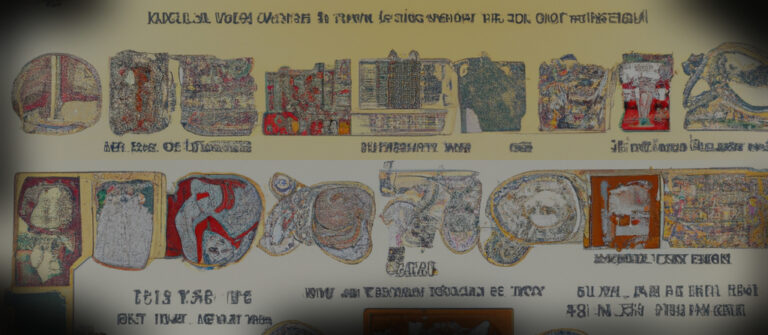- Preface: Why the book. I dedicated it to my dad, and this is that cute little story.
- Introduction: What to expect. The two page introduction sets up the idea that the book explores the evolution of human thought and moves in roughly chronological order, but that this is not a history book. Lots of history, but the philosophical concepts explored are ideas we are still exploring today.
- Prologue: In the one page prologue I’m introducing a new thing. In addition to explaining viewpoint prevention, I introduce the tool of Open Viewpoint Method (OVM) which is making its debut in the book.
1: Origin Story
Touchstones: The Big Bang, Free Will, Evolution, and Cultural Transmission.
A modern look at the Big Bang, evolution, and cultural transmission. Urges a cultural evolution that embraces our observations of nature. Includes Humanity’s origin story. Like Spiderman’s origin story, it’s fascinating, but this one is real! In addition to exploring evolution, and evolutionary psychology, Chapter 1 also explores the evolution of writing, and the evolution of Artificial Intelligence (AI). Two subjects that we revisit a few times on our journey. My favorite section of this chapter is “The True Story of Adam and Eve” where I explain how every human alive today is a descendent of one man and one woman.
2: Shuruppak and Paternal Wisdom
Touchstones: Knowledge Framework and Philosophy.
Shuruppakism uses the Instructions of Shuruppak to bring their ideas into the modern philosophical conversation. We also take a fresh look at the great flood stories placing Noah’s Ark clearly as a retelling of a much older story.
My favorite section is “The Great Flood Myths” section. I’m particularly proud of an ABCABC sentence structure I used for those paragraphs. In this chapter I also describe my personal philosophy for three reasons. First, I want the reader to know my viewpoint as early as possible. My writing is colored by my thoughts. Secondly, I use this to preview the book. Kind of a roadmap as to where we are going on this journey. Third, to generally describe various elements of what makes up a philosophy. A lead into the next sections.
3: Gargi and the Concept of Holism
Touchstones: Ontology and Holism.
Vedic Tradition: using the interconnected ideas of Hinduism to explore Holism and the nature of being. My favorite section is the “We are all Cousins” section where I talk about eating my cousin, the celery. It’s funny but also softly reminds us that we do eat living things.
4: Laozi and Daoist Philosophy
Touchstones: Non-action, Authenticity, Yin and Yang, and Unknowable Dao.
My favorite part of this chapter comes at the end when I tell the story of a young Confucius meeting an aged Laozi and that there two philosophical branches are the two branches of Eastern philosophy. I’m also really attracted to the concept of the unknowable Dao.
5: Confucius and Confucianism
Touchstones: Normalcy and Schemas.
I love applied philosophy and there’s no one better than Confucius. But my favorite section is the “Confucianism and the Samurai Life” section.
6: Gautama Buddha and Buddhism
Touchstones: Non-self, Nondualism, and Dualism.
I love Buddhism practical Eightfold Path. It’s a wonderful guide for life, a life to do list. My favorite section is the “Zen Buddhism” section.
7: Heraclitus and Your Worldview
Touchstones: Impermanence, Worldview, and Identity.
I love this whole chapter. It basically says you are unique. You have views. The next chapters explore reason and empirical data, then in Chapter 10, we DESTROY your views. LOL.
8: Plato and Rationalism
Touchstones: Reflective Inquiry and Ignorance is Bliss
I love the story of Socrates, Plato, and Aristotle and I think Chapters 8 and 9 do a GREAT job of telling it. My favorite section in this chapter is the “Ignorance is Bliss” section. In the middle of all this truth is truth, logic is key, see reality stuff, I inject a “never mind, ignorance is good too” moment. Love it! And, I believe it too. Geez, who wants to wallow in the depressing news all day. Sometimes, ignorance is bliss.
9: Aristotle and Empiricism
Touchstones: Syllogisms, Rationalism, Empiricism, Logic, Logical Fallacies, and Eudaimonia.
Aristotle is king of philosophy. There’s a reason for it too. This chapter can only touch on why. My favorite section is the “Plato, Aristotle, Zoroastrianism, and Heaven” section which explains the origins of the modern concept of a Heaven with God, and a fiery Hell.
10: Pyrrho of Elis and Skepticism
Touchstones: Skepticism and Social Constructs.
In this chapter, I destroy your mind! I blow away all you know. Well, I attempt to at any rate. I do explore dogmatic and skeptical views. I do explain social constructs. I do explain Einstein’s Theory of Relativity, I explain Nihilism. So, yeah, easily the most power chapter in the book. Especially at this point in the journey through human thought.
11: Epicurus and Epicureanism
Touchstones: Short-term vs. Long-term Pleasures, and Apathetic Agnosticism.
I love Epicureanism. I use it to define and manage desires and pleasures. For example, prioritizing good health over overeating. I also introduce the Epicurean Happiness Toolkit I created which is a 1-2-3-4 recipe to manage desires and pleasures which I created for this book.
12: Philo and Abrahamic Philosophy
Touchstone: Allegorical interpretation.
I love the part of this chapter that returns to Noah’s Ark and the reality of it, but my favorite section is probably “Philo of Alexandria and the Threat of Pleasure.”
13: Marcus Aurelius and Stoicism
Touchstones: Cognitive Reframing, Negative Visualization, and Cognitive Distancing.
I’m a Stoic so I guess I have to say this is my favorite chapter. Lol. This chapter took me the longest because I so wanted to make it perfect. I do think I did well. I particularly like how I framed the Stoic tools in a parallel 1-2-3-4 structure to the Epicurean Happiness Toolkit. For this book, I call the tools in Stoicism the Stoic Virtue Framework. I identify as an Epicurean Stoic so these two 1-2-3-4 devices help me remember it all.
14: Badarayana and Karma
Touchstones: Cause and Effect, and Cognitive Biases.
I was not looking forward to writing this chapter, I was stuck, but it turned out to be one of the best. I particularly appreciate the section on cognitive biases.
15: Augustine, Time, and War
Touchstones: Chronoception and Eternity.
My favorite section is the story of the affirming of the New Testament.
16: Al-Farabi and Intellect
Touchstones: Intellect and Existence.
I love the section on the Floating Man thought experiment. I expanded it to five parts and used the device of a deprivation chamber to bring it all home. I also like the section on AI consciousness. In Chapter 17, I explore uploading your conscious to an AI Superhuman Robot. Pretty fun stuff. Later, I return to consciousness with the Touring thought experiment and finish up in Chapter 33 with Sartre and his thoughts on the subject.
17: Alhazen and the Senses
Touchstones: Senses and Perceptions.
Although this chapter is about vision, I used it to pivot to the 5 senses and then to perception and then to indentity.
18: Peter Abelard and Universals
Touchstones: Intent, Object-Oriented Nature, Pattern Recognition, and The Idea of Ideas.
19: Guru Nanak and Sikhism
Touchstone: The Five Thieves
20: Francis Bacon and the Scientific Method
Touchstones: Absolute Truth, Truth Hammers, and The Scientific Method
21: Galileo and the Scientific Revolution
Touchstones: Relativity, the Infinitesimal, and Modern Cosmology
22: Descartes and Cartesian Dualism
Touchstones: Mind-Body Dualism, Idea Modeling, and Pragmatism
23: Roger Williams and Liberalism
Touchstones: Separation of Church and State, and Liberalism.
24: Locke and Natural Rights
Touchstones: Natural Rights, Due Process, The Social Contract, Checks and Balances, and Law.
25: Spinoza and Monism
Touchstones: Monism and Open Viewpoint Method (OVM)
26: Voltaire and Modern Journalism
Touchstones: Fourth Estate and Journalism
27: Hume and Skeptical Empiricism
Touchstones: Skeptical Empiricism, The Problem of Induction, and Hume’s Fork.
28: Kant and Kantianism
Touchstones: Transcendental Idealism and Categorical Imperative.
29: Mill and Utilitarianism
Touchstone: Harm Principle.
30: Nietzsche and Nihilism
Touchstones: Nihilism, Eternal Recurrence, and Übermensch.
31: Sartre and Existentialism
Touchstones: Anxiety, Consciousness, and Bad Faith.












